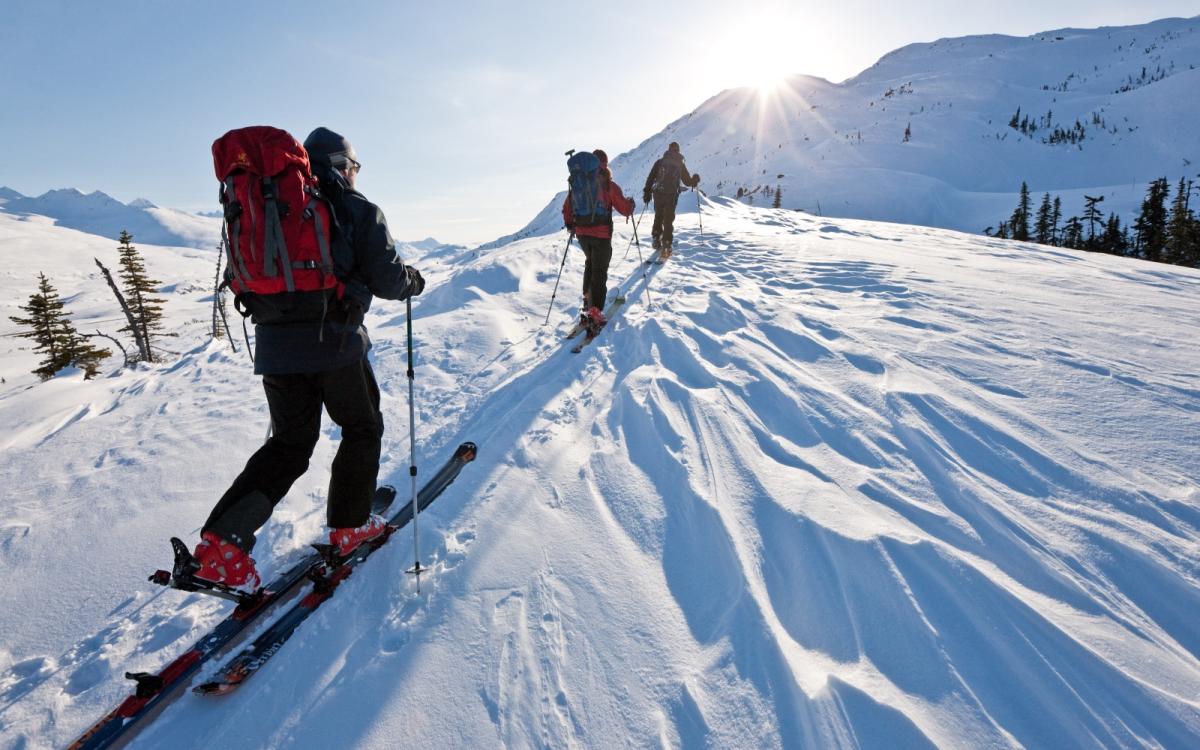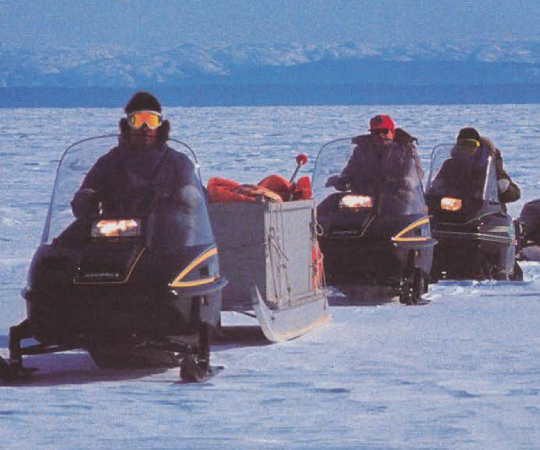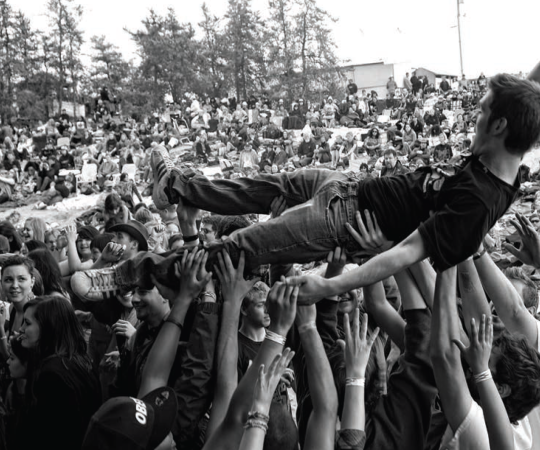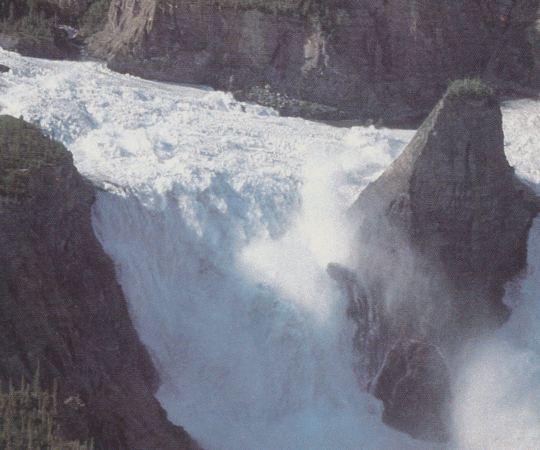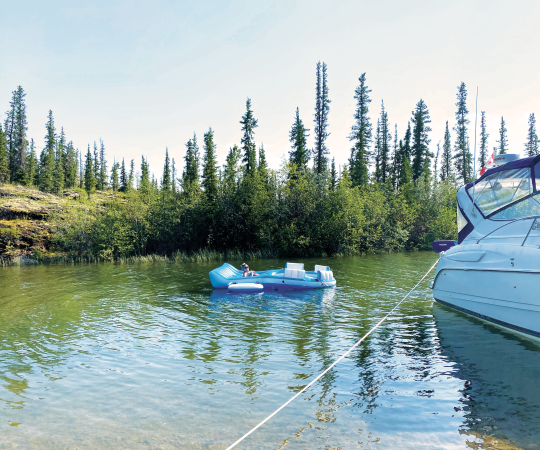When faced with a long, dark Northern winter, there’s only one thing to do—ski like there’s snow tomorrow.
The Whitehorse Cross Country Ski Club has been one of the busiest in the country per capita for decades, but manager Benjamin Poudou says a pandemic-motivated boost in membership is ushering in a golden era for the club.
“We are in a really good place right now,” he explains, speculating that travel restrictions encouraged many people to rediscover the sport or try it for the first time. Interest has remained high the past three years. “There's always ups and downs. But right now, the beauty of our [membership numbers] is we can dream big and we can make those dreams happen.”
This year the club expects to end up with roughly 2,200 members cruising the nearly 100 kilometres of groomed trails at Mount McIntyre. It’s not unusual to see 80-year-old athletes swishing by new mothers pulling bundled babies behind them in rented pulk sleds.
“Because of what we do, our location and because of the active Yukon lifestyle, it’s so easy to get out skiing here,” explains Poudou. “The trails are downtown and people realize that it's super convenient to come skiing. A lot of people ski three times a week here.”
With increased revenue from memberships and government grants, the club has been able to expand adult lessons, provide free ski days, and purchase items like Nordic sit-skis that will continue to grow the sport. Last year the club purchased new grooming equipment, and sold its old equipment to the smaller Haines Junction club, 150 kilometres west of the capital.
Although cross-country skiing has its origins in the subarctic, it did not arrive in North America until relatively recently. There is evidence in Scandinavia that the Sámi have been using skis for more than 5,000 years, which makes the introduction of the sport to Canada in the 1890s fairly new, in comparison. But that hasn’t stopped it from becoming a huge part of life in the North.
The uptake of cross-country skiing in the Yukon and Northwest Territories is often credited to Father J.M. Mouchet, an Oblate priest who came to Northern Canada in 1946. While posted to Inuvik, Mouchet founded the Territorial Experimental Ski Training program to promote skiing in Northern communities. Over the years, the program produced remarkable athletes, including Olympian sisters Sharon and Shirley Firth.
The sport remains popular throughout the Yukon, and much of the North, in large part due to the efforts of committed staff at smaller clubs—often entirely composed of volunteers—who groom trails and organize events for members to enjoy.
Today, Chuck Lirette is one of the 10 dedicated volunteers at the Hay River Ski Club responsible for maintaining the 15 kilometres of trails. Founded in the 1980s, the club serves around 170 members in a given year.
“I'm always really proud when people say the club and the trails and the facilities here rival anything that exists down south. I think our ski club has always been a bit of a hidden secret,” says Lirette.
Trails at the Hay River club weave around black spruce and poplar trees and along the bank of the town’s namesake river. The Brendan Green Loop is named after the local biathlete who competed at three Olympics Games. Another trail features bird feeders along the route, letting skiers enjoy the sights and sounds of nature.
The Northern ski season often begins in November and has been known to last until May—long after southern trails have been reduced to slush and mud. For high-level Nordic ski athletes competing in classic, freestyle, and biathlon events, the long winters offer an unrivaled training season. But for the rest of us, it’s the skiing that offers relief from a long season of cold and snow.
“Right now, we've got the chickadees and the gray jays that are really active and the squirrels are tearing around like crazy. It’s just a really healthy place to be out for an hour on the trails and it’s guaranteed you're going to go home feeling a little bit better,” says Lirette, in mid-November.
But Northern skiers don’t always stick to the groomed tracks. Skiing originated as a way to traverse snowy environments and many continue to explore “off-piste” into the backcountry.
A hundred kilometres east of Yellowknife, Blachford Lake Lodge welcomes all types of skiers. Most guests will fly in to the lodge, but every year a few adventurers travel by ski from the NWT capital for two to three days to begin their holiday.
“Those are [the] most diehard, super avid cross-country skiers that use it as a mode of transportation to get to the lodge,” says general manager Katherine Johnson. “Then they get to be guests with the lodge for a couple of days and enjoy everything else we have out there.”
“Enjoying and embracing winter is a big part of the culture here,” says Johnson. Most visitors plan their trips around Northern Lights—unlike downhill skiing, cross-country is less of a destination activity. But Johnson says visitors from places like Quebec and Ontario enjoy exploring a new landscape on skis.
“In the winter, the snow is just incredible. Every surface is sparkling. One of the other things I think a lot of our guests like to enjoy is actually the sound of silence. Not many people from big cities have ever heard that before. When you're out on the trails and you stop, and the only thing you can hear is silence, it’s quite profound for many people,” says Johnson.
“There’s nothing more powerful than when you're out in the winter, on a simple 10K loop, and you realize just how big the landscape is and how beautiful every little part of it is. Each lake is unique. Each shoreline is unique. And you really get the chance to see that when you're out on skis.”

